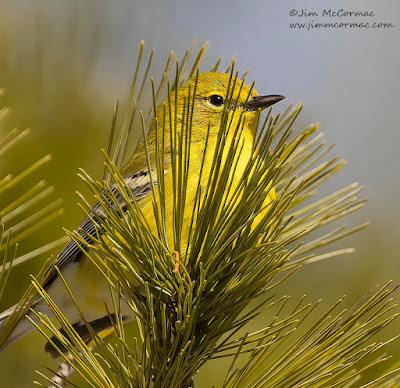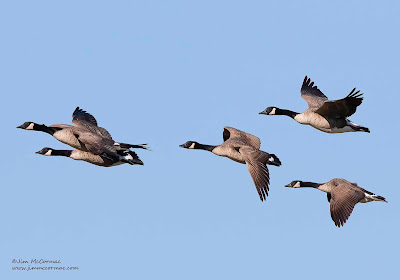Bert Szabo, in the field. A legend among natural philosophers, Bert spent an incalculable number of hours afield over his 101 years - far more than anyone who will read this has. And far more than any of us probably will. Always the consummate gentlemen, Bert was a pioneer in many ways. He was among the first formally titled naturalists at the infancy of the establishment of local park districts and many of his ideas led to programs and interpretive tactics still commonly in use today. The product of a life well lived, insatiable intellectual curiosity, and darn good genetics, Bert remained active to near the end.
Bert's full and informative obituary follows:
Bertalan Louis Szabo (“Bert”) passed away on March 22nd, 2022 at 101 years of age. He was born in Lorain, Ohio on December 4th, 1920. Previously a resident of Hudson, he lived in Munroe Falls, Ohio for the last 45 years. He is survived by four children: Judy (Floyd) Aprill, John (Rosario) Szabo, Suzi (Phillip) Gard, and Mark (Vianna) Szabo; nine grandchildren and fourteen great grandchildren.
Visitation will be held at Dunn-Quigley Funeral Home, 3333 Kent Road in Stow, on Friday, March 25th from 4:00-8:00 pm. A funeral Mass will be at Holy Family Catholic Church, 3179 Kent Rd, Stow, on Saturday at 9:30 am.
The family has requested that remembrances be made in the form of contributions to Sieberling Nature Realm, Summit Metro Parks, 975 Treaty Line Road, Akron, Ohio, 44313.
A neighbor, Mr. Green, first introduced him to nature at the age of four. As a teen, he roamed the woods along the Black River and French Creek in Lorain County, admiring the birds and wildflowers.
After high school, Bert worked in a steel mill and soon discovered that was not his life’s calling. He found Ohio University much more to his liking. After three years there, WW II intervened. When the war was over, he returned to school, graduating with a bachelor’s degree in agriculture and masters in plant pathology.
After several agriculture related jobs, Bert began his professional career as manager of the Western Reserve Academy’s Evamere Farm in Hudson in 1951. In 1957, the Akron Metropolitan Park District (now Summit Metro Parks) hired him as an Area Manager. The following year, he began to present interpretive programs about nature in addition to his managerial duties. In 1963 his position was officially changed to Naturalist. After helping thousands of park visitors of several generations to identify, appreciate, and better understand the flora, fauna, geology, and history of the park system, he retired as Chief Naturalist at 71 years old. Toward the end of this career, the unique nature center building that he helped design (located in the F.A Seiberling Nature Realm) had finally opened.
Bert was involved in the creation of Summit Metro Parks Fall Hiking Spree. From its inception in 1964, Bert’s nature walks helped to promote this novel idea. Approximately 600 hikers participated that first year and received a wooden hiking staff. Over the years, the Hiking Spree continued to grow and now attracts nearly 40,000 participants yearly. Of those original 600 original hikers, 12 completed every Hiking Spree up to the 50th anniversary. Of course Bert was one of them!
Since Bert’s retirement he has stayed in close touch with Summit Metro Parks as a volunteer. He organized the park district photographic and historical archives as well as assisted in special events. When he reached 7000 total volunteer hours in 2018, Summit Metro Parks honored him.
An avid birder, Bert served as official compiler for Greater Akron Audubon Chapter’s Christmas Bird Count from 1970-1992. For a decade he volunteered on Lake Erie’s shore with Crane Creek State Park’s monthly bird census as well as pursuing his hobby through travel both domestically and abroad.
Several of his offspring followed in his naturalist tradition. His oldest son, Dr. John Szabo is a retired chairman of the Geosciences Department of the University of Akron. His son, Mark, is a retired naturalist from the Huron-Clinton Metroparks in Michigan. Grandsons Howard Aprill is a naturalist with Milwaukee County Parks, Dr. Michael Aprill is a science teacher in Sheboygan, Wisconsin and Shawn Szabo is a wildlife biologist attending graduate school at Oregon State University.
Bert became a member of the Association of Interpretive Naturalists (AIN) in 1958 and eventually served as its president (1969-1971). In 1988 AIN became NAI, the National Association for Interpretation and Bert was a founding member. The organization gave him numerous awards and accolades. Despite the fact that he retired thirty years ago, he remained active in NAI and was a revered as an elder.
Bert served on the Ohio Department of Natural Resources’ Natural Areas & Preserves Council (governor-appointed position) 1970-1983 and 1987-1994 and on the Old Woman Creek National Estuarine Sanctuary Council 1981-2004. He also served on ODNR’s Recreation Resources Commission, 1990-1994 and as Audubon’s representative on PPG (formerly Pittsburgh Plate & Glass) Advisory Panel, 2002-2006.
As a board member (circa 1991-2002), Bert helped to establish and grow the Friends of the [Summit] Metro Parks, a nonprofit cooperative organization that helps to provide financial support of his park district.
In the early 1970s, he was an outspoken advocate for the establishment of Cuyahoga Valley National Recreation Area, finally realized in 1974. A few years later the Akron Beacon Journal wrote, ““His grassroots campaigning in the early 1960s on behalf of the National Park in the Cuyahoga River Valley is generally recognized as the force which kept the political ball rolling.” It has since grown to 33,000 acres and was officially re-designated from a recreation area to a national park in 2000.
He was inducted into the Ohio Senior Citizens Hall of Fame in 2018 and the Ohio Veterans Hall of Fame in 2019.
The last paragraph of his last article in the Metro Park “Green Islands” (1991) states:
The pollution of our planet, the loss of forests, plants and animals must be our major concern. They are biological time clocks ticking off the time when man may no longer persevere. We cannot separate natural history from human history – each is dependent upon the other. Protecting our environment is essential for the health and welfare of future generations. It is my hope that I have contributed somewhat to this endeavor.
The family has requested that remembrances be made in the form of contributions to Sieberling Nature Realm, Summit Metro Parks, 975 Treaty Line Road, Akron, Ohio, 44313.
Bert (L) with another Akron-area legend, Ed Pierce.
%20copy.jpg)


%20copy.jpg)
%20copy.jpg)




















